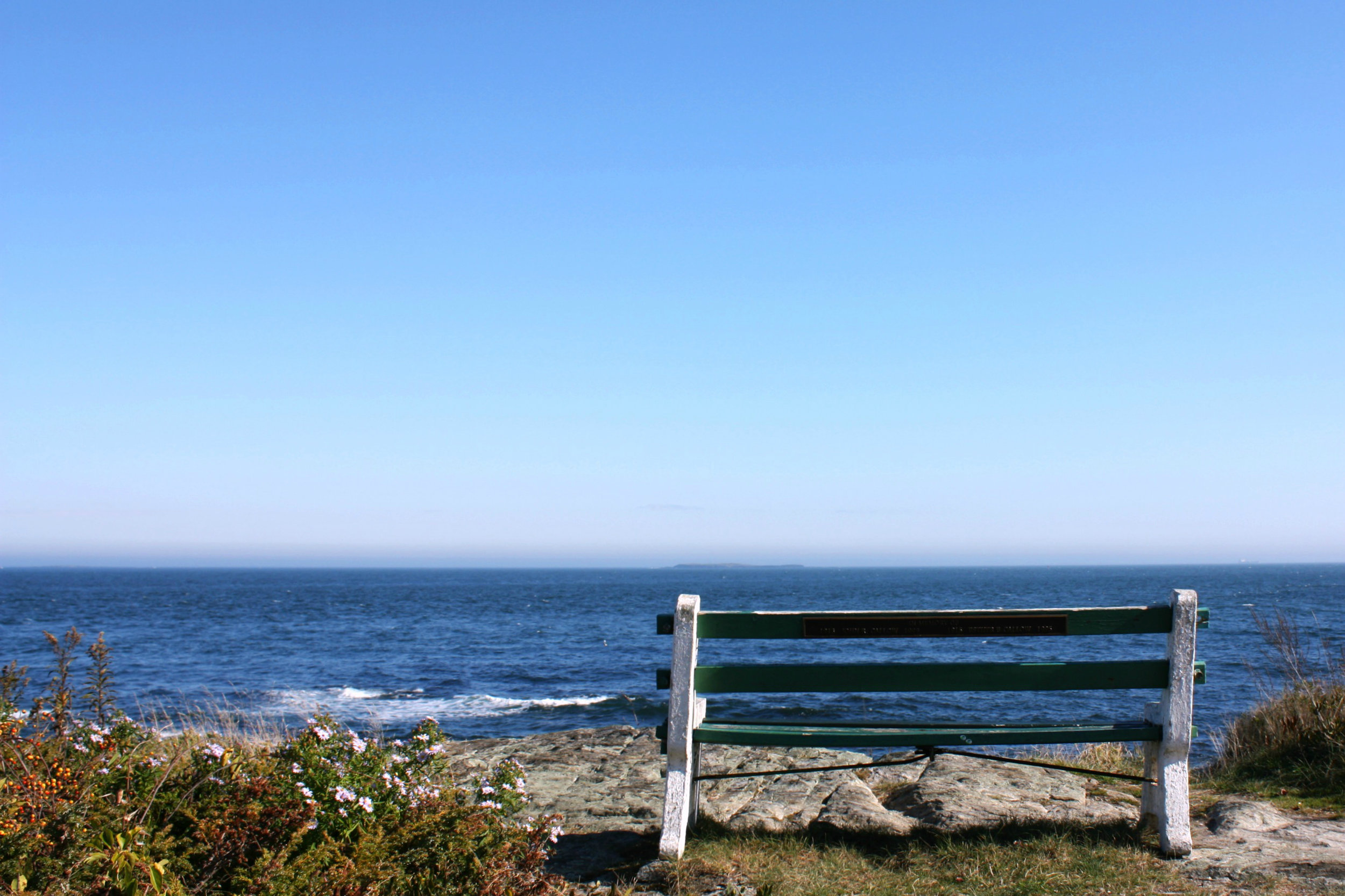Peaks Island Homecoming
Peaks Island Homecoming
Words and Photos by Gigi Thibodeau
I've walked this island on spring mornings, when the fog was dotted yellow by forsythia and daffodils; in summer, when the roads were thick with day trippers on bicycles and summer renters in golf carts; and after a winter snowfall with only the gulls to keep me company on the long curve around the Back Shore. But always my favorite season to return to Peaks Island is autumn. This is the time when chimneys curl with wood smoke, fallen leaves crunch beneath my sneakers, and beside porch railings pumpkins grin next to lobster buoys. This is the time when it feels like coming home.
It’s a simple journey back. I layer on an extra sweater and a thick scarf for the fifteen minute ferry ride from Portland, buy my ticket at the terminal, and climb up to the top deck to take in the views of Casco Bay lighthouses and forts. I settle onto a bench and watch the tourists taking pictures as we leave the dock. We are not five minutes out when a little girl spots a seal. As the wind picks up I forget the mainland. The island lies just ahead. Between trees in shades of red and gold, classic Victorian cottages fleck the shoreline. I shiver, but not from the cold. I’ve lived places where fall isn’t like this. I know how lucky I am.
Soon we are pulling up to the landing, with its large, red-lettered “Peaks Island” sign. I feel the familiar tug at my heart. I stayed here on the island one fall for four too-short months, and years later it still calls to me. I don’t come to Peaks to escape from my life. I come to reconnect with what is most essential. Each time I return it’s as familiar as a promise kept. I head up the gangplank into the center of Down Front, the island’s village, complete with cafe, inns, a handful of gift shops, post office, a grocery store straight out of 1975, bike rental, library, and even its very own umbrella-cover museum. All the necessities.
At the intersection beside the public bulletin board, there’s a choice to be made. Days when I want a short walk with a big payoff, I head right. Within ten minutes l’ll hit stunning views of open ocean, my nose full of salt air and beach roses. Today, though, I go left. I want delayed gratification, a long, leisurely trek around the roads that ring the island, about three and half miles of easy walking. If I factor in time for bird watching, dream-house shopping, bench loafing, and sea glass hunting, it will take me a couple of hours.
As I pass the mix of summer cottages and year-round homes along Island Avenue, a man drives past me in a beat-up truck, the license plate marked “Island Car.” He nods and waves, and I wave back. During the fall when I stayed on Peaks, I quickly learned a basic fact about the island: whether driving, biking, or walking, most locals wave — not just to each other, but to visitors, too. While friendly and welcoming, this is not a quaint gesture. It’s as necessary to island life as good storm windows. You never know when you’ll need each other.
This side of the island faces the mainland. Portland’s skyline appears in glimpses between houses and tea-stained hydrangeas. Out near Little Diamond Island a ferry blasts its horn. This neighborhood is comforting and homey, the epitome of village life.
It is not until the turn up Skillings Avenue to cross over to the other side that things begin to change. In a few yards Skillings meets Seashore Avenue, yet there is no seashore in sight. Instead, the trees grow thicker here, the houses sparser. The island feels a bit less civilized. Ferns, now yellowed by cold nights, line the road in lush abundance. Overhead a blue jay flashes against the bark of a birch tree. The woods are storybook dark and green as the road begins to descend.
I smell the Back Shore before I see it: the salt air scouring the rattling leaves. Seashore Avenue curves now into Spar Cove, and the drama begins.
Here the island faces open ocean. The road ribbons between salt marshes backed by woods and ledges on one side, and granite rocks leading down to the waves on the other. Cormorants spread their wings to dry in the sun along the shoreline, as they have for thousands of years. Beach roses and wild asters bloom in abandon amid the drying stalks of goldenrod and Queen Anne’s lace. Even on a chilly day the sun is warm.
As my feet follow the familiar dips and swells of the Back Shore, the tug in my heart becomes full-blown longing. I reach into my pocket for the ferry schedule. If I can’t stay here forever, maybe I can at least catch a later ferry. Maybe there’s time for wandering through the paths around Battery Steele, the graffiti-covered World War II bunker just off the road. Maybe there’s time to add my own cairn to the ever-changing collection built by other walkers, each one’s silhouette an echo of nearby Ram Island Light. And I will definitely make time to find a few pieces of sea glass on Hadlock Point.
It is during my wandering, tower building, and treasure hunting that the hardest part comes. I must pass by the tiny cottage where I stayed, and which is now being renovated to be a much bigger house. The owners will have better views of the crashing waves during storms, and they will no longer hit their heads on the sloping ceiling when they wake up each morning, but gone is what I loved about the place. Much like Peaks itself, its bare-boned beauty was as homelike as anywhere I’ve ever been.
The road soon curves back up into the village, past more sweet cottages with names like West O’ the Moon and Chanticleer. At one house, a brood of chickens comes to greet me. At another, an orange cat lies nearly camouflaged in a pile of leaves. I turn and head down Welch Street towards the landing just as the ferry arrives. I’ve come full circle, yet I can’t stop thinking about the little cottage that will soon be a house. I’m okay with change, I tell myself as I follow the other passengers on board and climb back up to the top deck. Yes, change can be good, like leaves falling from the trees.
The captain blasts the horn, then pulls away from the dock. The island recedes from view, but that’s all right, because I know it by heart. Besides, I remind myself, someday I will find another tiny cottage, and I then I will come home for good.




















